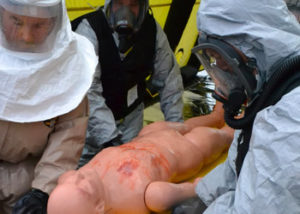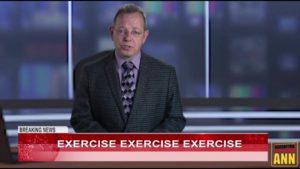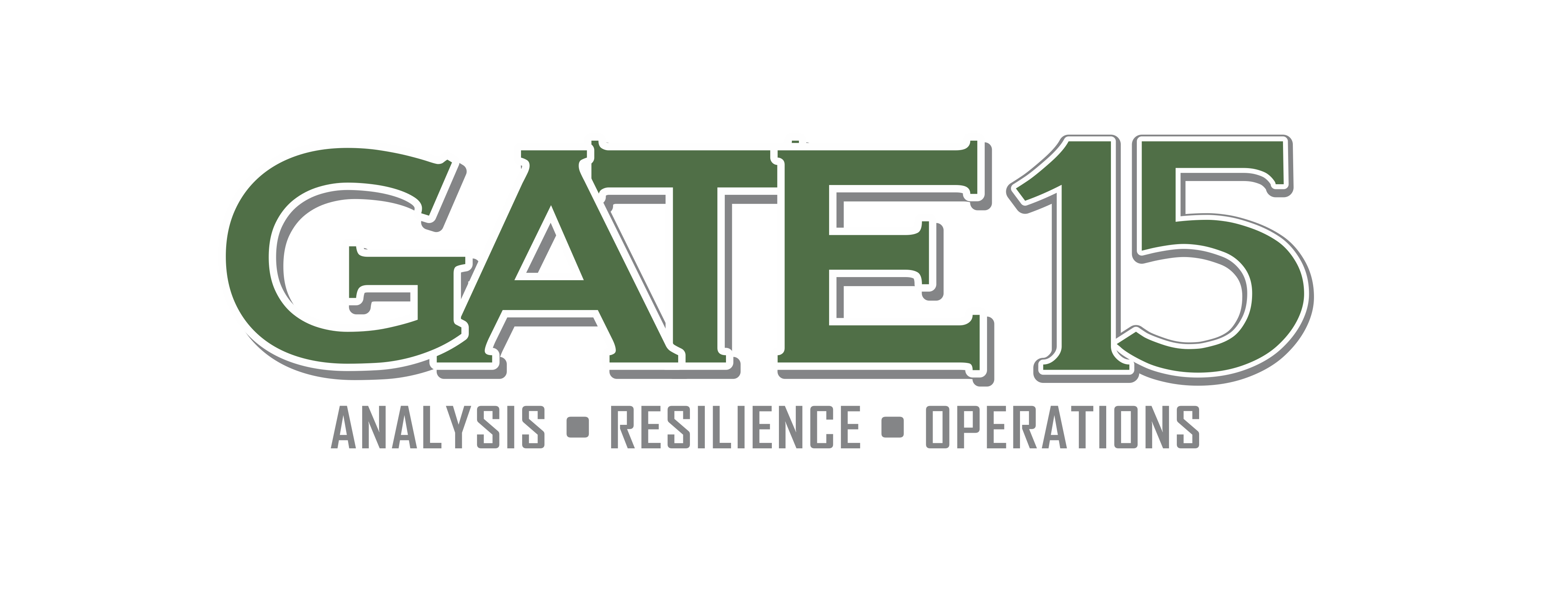Introduction. At Gate 15, our team focuses on risk management and organizational security and resilience, with unique expertise in threat analysis, operations and preparedness (planning, training, exercise and continuity) support. Recognizing that clients and partners require additional technology, services and capabilities to effectively manage their complete risk profile, our team partners with organizations that can enhance our competencies and which offer additional risk management resources that complement our capabilities. On the “About Us” page of this website, you’ll see some of our outstanding partners. In a five-part series, we’ll be posting updates with interviews with these partners to share more about what they do and how they can help organizations reduce their risk and enhance preparedness, security and resilience.
Ascenttra: Interview with Founder, Derek Rowan
There is a lot of overlap in what we do but we love to have you and your team as partners because rather than seeing our teams as competitive, we believe there is tremendous compliment in our backgrounds, approach and expertise. Can you share some about your personal background and experience and how that informs your work today? Well, first and foremost, my background has always been about solving problems and taking care of people. Being a firefighter for almost 30 years in a large suburban fire department shaped several facets of my approach to my work today. Owning my own businesses for my entire adult life has provided immense managerial, fiscal, and relationship building skills that are useful in all situations. My years on an international urban search and rescue team provided a unique opportunity to integrate with multiple levels of governments during some of our worst disasters. My over 25 years of instructing provided a wealth of experience in how people learn, how they handle stressful environments, and allowed me to grow by having an almost unlimited canvas for the design, development, conduct, and evaluation of custom courseware and exercises across for a large spectrum of participants. It is during these times where I really saw what was possible in a good training program, what didn’t work well, and how important immersive realism is for exercise design and evaluation.
I think for many of us working in preparedness, we value the entire preparedness process and the fundamental aspects that are consistent whether we’re addressing terrorism, natural hazards, cybersecurity, continuity or any other event. Appreciating those similarities, can you address some of the differences you consider relevant to planning a continuity exercise or a cyber-focused exercise, as opposed to more traditional events? The process of preparedness as you state, doesn’t change. All procedures work best when done in a consistent manner – including preparedness. Exercise design is no different. The process doesn’t change. However, the simulation components are much different when the scenario and simulation contain cyber elements, continuity elements, terrorists, foreign or corporate intelligence and espionage etc.
Continuity in and of itself is a special breed of exercise design because of the criticality of evaluating all 14 elements of a viable continuity plan. You generally can’t (and shouldn’t) just focus on a single part of the plan, as all the elements are connected. In addition, I have found through experience that ensuring the extent of play for a continuity exercise truly matches the essential functions or supporting activities that are in play. One of the more common mistakes I see during a continuity exercise is having ill-defined definitions of the essential functions or supporting activities and ensuring the extent of play matches. If there is a disconnect, the evaluation can often not be an “objective” evaluation, but rather turns quickly into subjectivity.
For cyber exercises, the largest challenge is determining how the simulation will be revealed to players. I’ve generally seen this done in very unrealistic fashions which results in an unsatisfactory experience for all players. Because of the cascading effects off cyber systems and critical infrastructure that relies on electronic systems, having all simulated events revealed in a realistic manner is important for players to be immersed within the exercise.
For terrorist or intelligence exercises, it’s critical that all intelligence products, and terrorist techniques, be realistic, and if there is a live “red team” that they are versed and educated on their doctrine, funding, methodologies, kill chain scenarios, etc. It is also important that there is a realistic chain of evidence throughout and the extent of play has been matched with  the scenario to allow for the correct time that is allotted to play. Finally, it’s critical that in classified exercises, that classification levels are matched to the players and if there is the capability to tearline products within the simulation cell so that all players can receive information during conduct.
the scenario to allow for the correct time that is allotted to play. Finally, it’s critical that in classified exercises, that classification levels are matched to the players and if there is the capability to tearline products within the simulation cell so that all players can receive information during conduct.
Our teams have both been a part of organizational, local and state events up to the nation’s most complex senior leader exercises, with a lot of unique and specialized experiences. We’ve worked with first responders, critical infrastructure, private sector entities, military components, state officials, cabinet members – you name it. What are some of the consistent issues you see across the environment that organizations commonly need to further develop or more frequently revisit? As one that not only writes exercises, but also has been on the street, it is clear, we tend to make the same mistakes over and over. While I have my “top 10” that is pretty consistent, the major themes do change depending upon if we are doing a discussion-based or an operations-based exercise. For example, in a discussion-based exercise, everyone talks about incident management, and incident action planning and how to perform it. However, we have found incident action planning to consistently be an area for improvement. One issue is that there is inadequate training on how to perform incident action planning – especially in a multiple agency management team. Secondly, is that most exercises do not span more than one operational period causing this skill to atrophy. To help manage this challenge, we have designed several custom Incident Action Planning coursewares for a variety of audiences. Once people have some training and practice they invariably perform much better.
Your team incorporates a lot of really clever capabilities into exercise design and execution to add more complete planning and realism into events. Can you speak to some of Ascenttra’s special capabilities and your social media tools? Many of the exercises that I have seen do not incorporate enough realism to generate pressures you would normally see in the real world. Part of the reason is insufficient realism of the scenario, prop s, and simulated communications from non-playing entities.
s, and simulated communications from non-playing entities.
During a functional exercise for example, ensuring that the simulated entities can provide accurate, realistic, and correct communications based on where they are, where they have been assigned by players, who they should be reporting to as defined by the players, and what mode, frequency, and format of the communications should be is critical to realism. Many exercises I have seen, just have their simulation cell “wing it” without adequate ground truth, or a way to accurately track all notional resources in real time. A related but important additional item is accurately simulating the public. Today, having an accurate and realistic public simulation is critical. Our custom designed social media simulation system provides players an extremely accurate, realistic, and secure platform for this simulation. Our system accurately simulates popular social media platforms in a very realistic way to including the ability to provide thousands of posts per minute, direct simulator interaction with players in real time, and an accurate portrayal of agency systems. We combine this with our real time synthetic media news station staffed by former news anchors, to provide a realistic and interactive public simulation. All of this is designed to ensure an accurate and objective evaluation of player objectives.
When I think of expertise in control and evaluation I think of you. I associate you with FEMA’s largest undertakings and we appreciate your robust team’s experience and flexibility to support full-scale exercises. What makes Ascenttra so strong in this area? It’s really the fact that we have been in the shoes of our clients. Our staff is only made up of people that have or are still are in the field. Our experts in law enforcement, SWAT, emergency management, hospital staff, public health, continuity, cyber, fire and rescue, intelligence, and more are what make us unique. But it’s not just field experience. All of our staff are also experienced curricula designers and instructors in their fields. Because we know how it works on the player side, coupled with strong instructional design, we design the most realistic exercises, controlled tightly, to ensure an accurate simulation, and the best and most objective evaluation around.
If someone reading this post wants to learn more about your services, what’s the best way to get more information? The best way is to send an email to info@ascenttra.com.
Thank you, Derek! Our team really values your partnership and we’re very excited about some of the collaboration we’ve got underway. Our team is especi ally excited about our ability to support one another to offer organizations a complete preparedness solution to addressing Hostile Events to include Active Shooter and Complex Coordinated Terrorist Attacks (find out more here)!
ally excited about our ability to support one another to offer organizations a complete preparedness solution to addressing Hostile Events to include Active Shooter and Complex Coordinated Terrorist Attacks (find out more here)!



